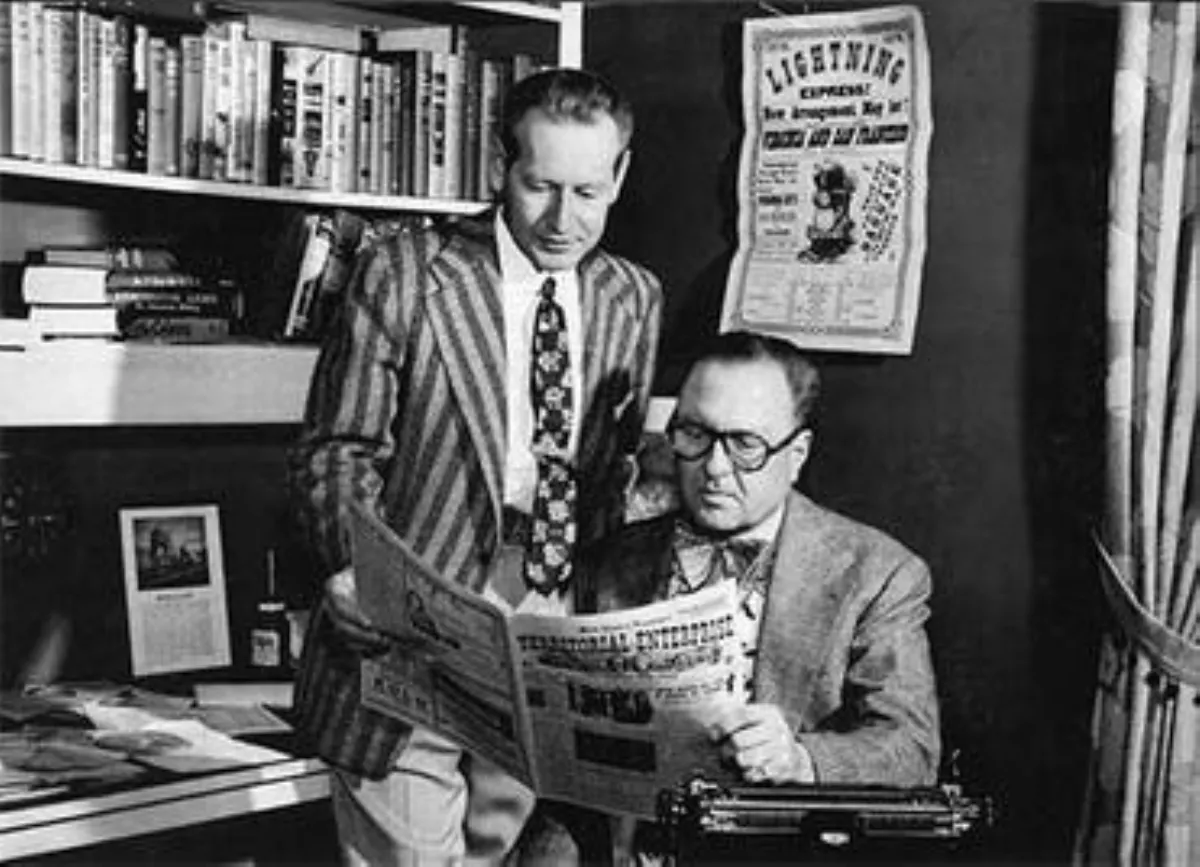 1.
1. Lucius Morris Beebe was an American writer, gourmand, photographer, railroad historian, journalist, and syndicated columnist.

 1.
1. Lucius Morris Beebe was an American writer, gourmand, photographer, railroad historian, journalist, and syndicated columnist.
Lucius Beebe attended both Harvard University and Yale University, where he contributed to the campus newspaper, Harvard Crimson, and the humor magazine, The Yale Record.
Lucius Beebe's pranks were not without consequence, and he proudly noted that he had the sole distinction of having been expelled from both Harvard and Yale, at the insistence, respectively, of the president and dean.
Lucius Beebe earned his undergraduate degree from Harvard in 1926, only to be expelled during graduate school.
Lucius Beebe worked as a journalist for the New York Herald Tribune, the San Francisco Examiner, the Boston Telegram, and the Boston Evening Transcript, and was a contributing writer to many magazines such as Gourmet, The New Yorker, Town and Country, Holiday, American Heritage, and Playboy.
Lucius Beebe re-launched Nevada's first newspaper, the Territorial Enterprise, in 1952.
Lucius Beebe wrote a syndicated column for the New York Herald Tribune, from the 1930s through 1944, called This New York.
Lucius Beebe is credited with popularizing the term "cafe society", which was used to describe the people mentioned in his column.
In 1960, Lucius Beebe began work with the San Francisco Chronicle, where he wrote a syndicated column, This Wild West.
Lucius Beebe had his own column, Along the Boulevards, in Gourmet, and wrote extensively for Holiday and Playboy about restaurants and dining experiences around the world.
Lucius Beebe was the first writer to use a painting by Howard L Fogg, noted railroad artist, on the cover of a book.
Lucius Beebe was inducted into the Nevada Writers Hall of Fame in 1992.
Lucius Beebe wrote extensively about the joys of train travel, including such nostalgic books describing quaint short line railroads as Mixed Train Daily and Narrow Gauge in the Rockies.
Lucius Beebe was a noted partisan of the Cunard Line and passenger liner travel in general.
Lucius Beebe wrote several articles about trans-Atlantic passage on Cunard ships during the "Golden Era" of the 1920s, 30s and 40s.
Lucius Beebe's clothing included 40 suits, at least two mink-lined overcoats, numerous top hats and bowlers, a collection of doeskin gloves, walking sticks and a substantial gold nugget watch chain.
Lucius Beebe liked ties, particularly from Charvet in Paris, men's hats and wrote of the history of the bowler hat.
In 1940, Lucius Beebe met Charles Clegg while both were houseguests at the Washington, DC, home of Evalyn Walsh McLean.
Previously, Lucius Beebe had been involved with society photographer Jerome Zerbe.
Lucius Beebe was appointed by Nevada's governor to be a member of the Nevada State Centennial Committee and was Chairman of the Silver Centennial Monument Committee, groups that planned events honoring Nevada's and Virginia City's history.
Clegg and Lucius Beebe sold the Territorial Enterprise in 1961 and purchased a home in suburban San Francisco.
Lucius Beebe died at the age of 63 of a sudden heart attack at his winter home in Hillsborough, California, on Friday, February 4,1966.
Clegg died by suicide in 1979, at the same age that Lucius Beebe had reached when he died.
Lucius Beebe claimed the upper portions of the Little Cottonwood Canyon line were inoperable under steam power and could only operate as a gravity tramway with uphill loads hauled by mules, which was only partially correct as the line was rebuilt in later years to allow steam use.
Outside of railroad books, Lucius Beebe received criticism from Boston, Massachusetts locals for his claims in the 1935 Boston and the Boston Legend with local Bostonians having made parlor games out of noting errors in the text; although the book was praised for capturing the spirit of the city and its culture.